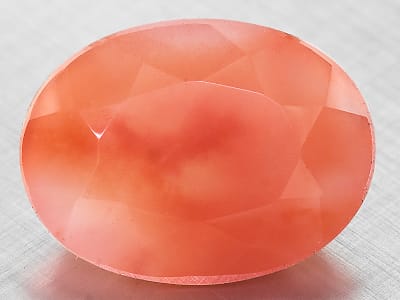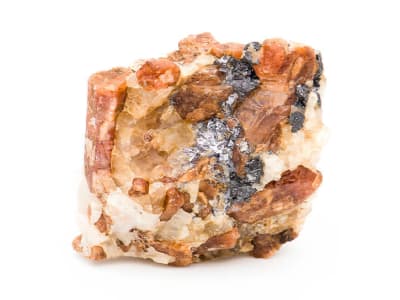Bustamite is a member of the wollastonite group. It is similar to rhodonite in appearance, but it is biaxal negative and rhodonite is biaxal positive. Stones are pinkish red to brownish pink. The stones get their color from manganese. Some gemstone material has been found but it is typically only 1-2 cts in size. It is difficult to cut due to its perfect cleavage in one direction and good cleavage in two directions. Fibrous material can be cut to produce cat’s-eye stones. It is usually found as a massive transparent pink material that may be cut into cabochons or carved into figurines. Faceted stones have come from Broken Hill, Australia, The Wessels Mine and N'Chwaning II Mine in South Africa, and Namibia.
General Information
LWUV: Strong red
Bustamite Colors
-
 Brown
Brown -
 Pink
Pink -
 Red
Red -
 Yellow
Yellow
Countries of Origin
Russian Federation; United States of America; United Kingdom of Great Britain and Northern Ireland; Saudi Arabia; Austria; Mongolia; Sweden; Unknown; China; Algeria; Slovakia; France; Serbia; Croatia; Argentina; Iran (Islamic Republic of); Romania; Japan; Spain; New Zealand; Canada; Turkey; Norway; Namibia; Honduras; Italy; Mexico; South Africa; Australia; Peru; Germany; Tajikistan
History
The original material named bustamite was found in Tetela de Ocampo, Hidalgo, Mexico in 1822. Some sources say it was named for the Mexican mineralogist and botanist Miguel Bustamante y Septiem and others state it was named after General Anastasio Bustamente. It was later found that the material found from Mexico was a mixture of rhodonite and johannsenite. In 1922 a similar but independent mineral was given the name bustamite.
Care
The pink color will fade if exposed to sunlight. Some specimens will discolor to black or brown after exposure to air.

